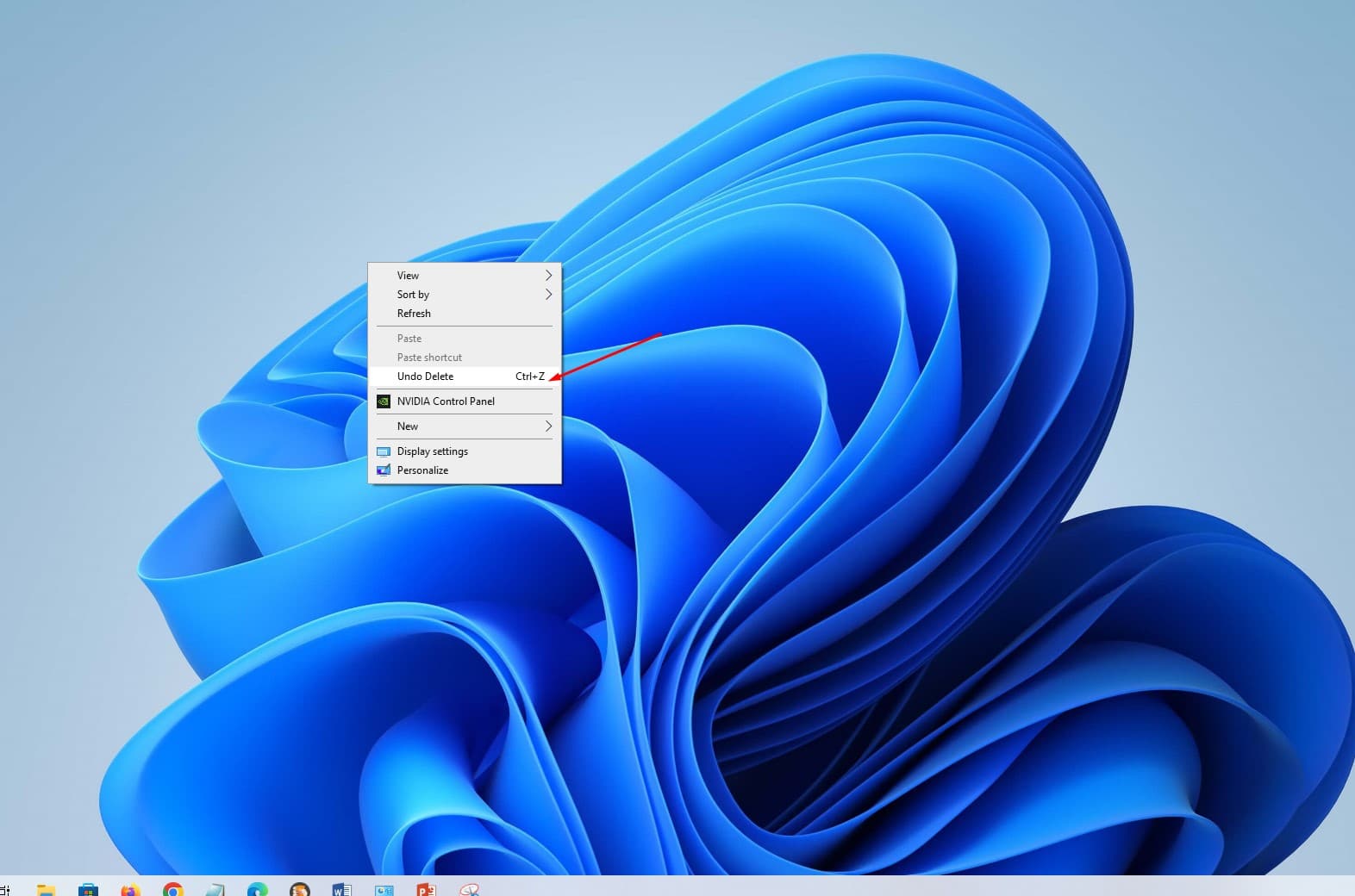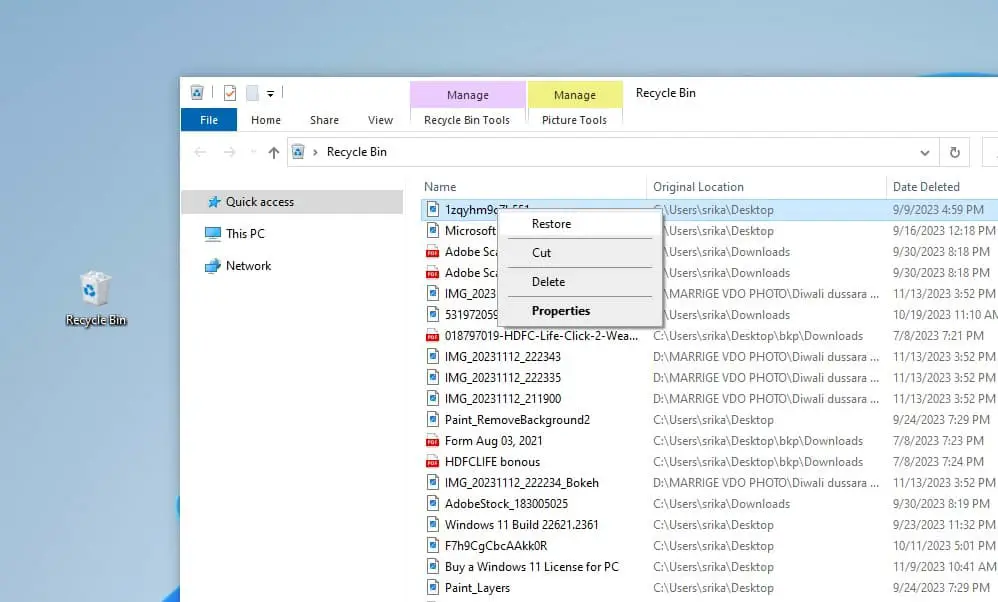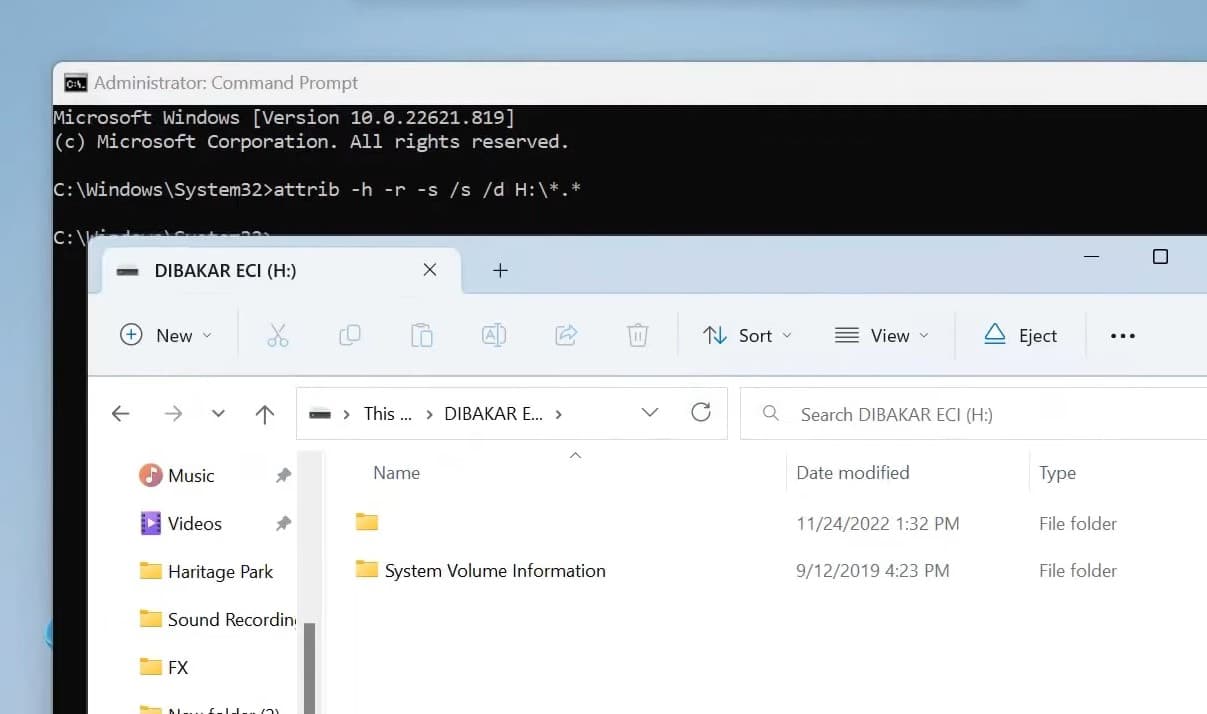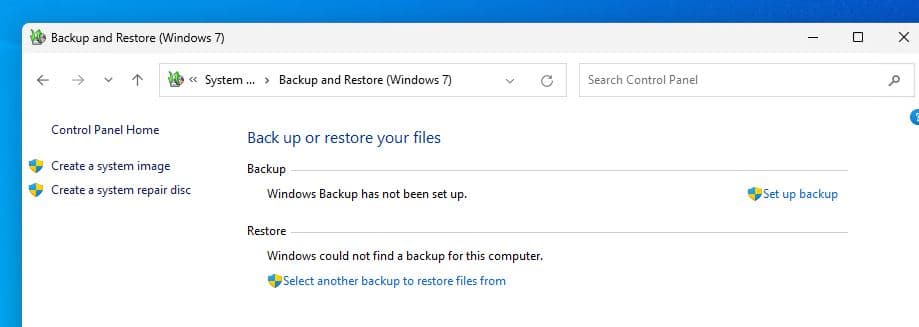Accidentally deleted a file or folder on your Windows 11 or 10 computer, you may have wondered how to get it back. Fortunately, there are several methods you can use to recover deleted files in Windows 11, depending on the situation and the type of data loss. This article explains how to use some of the built-in features of Windows 11 and 10, as well as some third-party software tools, to restore permanently deleted files.
How to Recover Deleted Files in Windows 11
Usually, When you delete a file on Windows 10 or 11, it isn’t immediately erased from the storage device Instead moved to the Recycle Bin. This means that you can still recover deleted files from the Recycle Bin as long as they are not permanently deleted.
Even if you empty the Recycle Bin or use Shift+Delete, (which bypasses the Recycle Bin) it is still possible to recover deleted files in some cases. This is because deleting a file or folder only removes its entry from the file system, which is like a table of contents that tells the computer where to find each file or folder on the storage device. The actual data of the file or folder remains on the storage device until it is overwritten by new data. This means that you can still recover deleted files using special software tools that can scan the storage device and find the data of deleted files or folders.
Recover Deleted Files from the Recycle Bin
The Recycle Bin is a special folder that stores files and folders that you delete from your computer. It acts as a safety net, allowing you to restore deleted items if you change your mind or realize you need them later.
The Recycle Bin is the first place to look when you’ve deleted files.
To recover deleted files from the Recycle Bin:
- Double-click on the Recycle Bin icon on your desktop to open it.
- Find and select the files or folders you want to recover. You can use the Ctrl and Shift keys to select multiple items at once.
- Here you can sort the files by name, location, date, and other criteria
- Right-click on the selection and choose Restore. This will restore the items to their original location.
- Or you can cut and paste the file/folder to a different location.
Recover Deleted Files Using Undo Delete
If you have just deleted a file or folder and realized your mistake, you can use the Undo Delete feature to quickly restore it. This feature works only if you have not performed any other actions after deleting the file, such as copying, moving, or renaming other files.
To use Undo Delete:
- Click on an empty space in the folder where you deleted the file or folder.
- Press Ctrl+Z on your keyboard. This will undo the last action you performed, which was deleting the file or folder.
- Alternatively, you can right-click on an empty space in the folder and choose Undo Delete from the context menu.
Restore Files Using File History
File History is a backup feature that automatically saves copies of your files and folders in an external drive or a network location. You can use File History to restore previous versions of your files and folders if they are lost, deleted, or corrupted.
Note: This is only applicable if File history is enabled and configured on your PC.
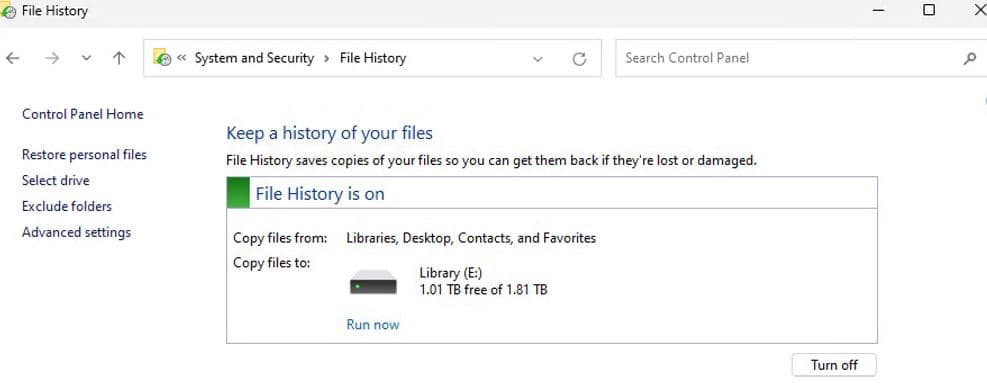
- Connect the external drive or access the network location where your File History backups are stored.
- Open the folder where your deleted file or folder was located.
- Click on the History button in the ribbon menu. This will open a timeline of previous versions of your files and folders.
- Use the arrows or the slider to navigate to the date and time when your file or folder was still intact.
- Select the file or folder you want to restore and click on the Restore button. This will restore the item to its original location.
Recover Deleted Files Using Command Prompt
If you do not have access to File History backups or any other backup solution, you can try to recover deleted files without third-party software using Command Prompt. This method uses a command called ATTRIB, which can change or display file attributes. By using this command with certain parameters, you can find and restore hidden files that may have been deleted by malware or other causes.
- First Open the Command Prompt as an administrator. To do this, type cmd in the search box, right-click on Command Prompt, and choose Run as administrator.
- In Command Prompt, type command attrib -h -r -s /s /d drive letter:\*.* and press enter key,
- Replace the drive letter with the letter of the drive where your deleted file or folder was located. For example, if it was in C:\Users\Documents, type C:.
- This command will search for all hidden, read-only, and system files in the specified drive and remove these attributes from them.
- After the command finishes running, open File Explorer and navigate to the drive where your deleted file or folder was located. You should be able to see it now.
- Right-click on the file or folder and choose Properties. Under Attributes, uncheck Hidden if it is checked.
- Move or copy the file or folder to a safe location
Recover Permanently Deleted Files from an Older Backup
If none of the above methods work for you, you may still be able to recover permanently deleted files from an older backup. This method requires that you have created a backup of your files and folders using Windows Backup or another backup software before deleting them.
If you regularly back up your system, you can restore the deleted files from your backup.
- Connect the external drive or access the network location where your backup is stored.
- Open the Control Panel and click on System and Security.
- Click on Backup and Restore (Windows 7) under Windows Backup.
- Click on Restore my files under Restore.
- Follow the instructions in the wizard to select the backup you want to restore from and the files or folders you want to restore.
- Choose where you want to restore the files or folders to and click on Restore.
Recover Deleted Files from Cloud Storage Services
If you have synced your files and folders with a cloud storage service, such as OneDrive, Google Drive, Dropbox, or iCloud, you may be able to recover deleted files from there. Most cloud storage services keep a history of your file changes and allow you to restore previous versions or deleted items
- Log in to your cloud storage service account and access the folder where your deleted file or folder was located.
- Look for a trash bin icon or a menu option that says Deleted items, Trash, Bin, or something similar. Click on it to open it.
- Find and select the file or folder you want to restore. You may be able to see when it was deleted and how long it will remain in the trash bin before being permanently deleted.
- Click on the Restore button or option. This will restore the file or folder to its original location.
Recover Deleted Files Using Third-Party Data Recovery Software
If all else fails, you can try to recover deleted files using third-party data recovery software. There are many data recovery software tools available on the market, but not all of them are reliable or effective. Some of them may even cause further damage to your data or infect your computer with malware. Therefore, you should be careful when choosing a data recovery software tool and only use reputable and trusted ones.
If the built-in tools don’t help, consider using third-party file recovery software.
There are several options available, such as Recuva, EaseUS Data Recovery Wizard, or Disk Drill. Download and install the software, then follow the instructions to scan and recover your deleted files.
Also read:
